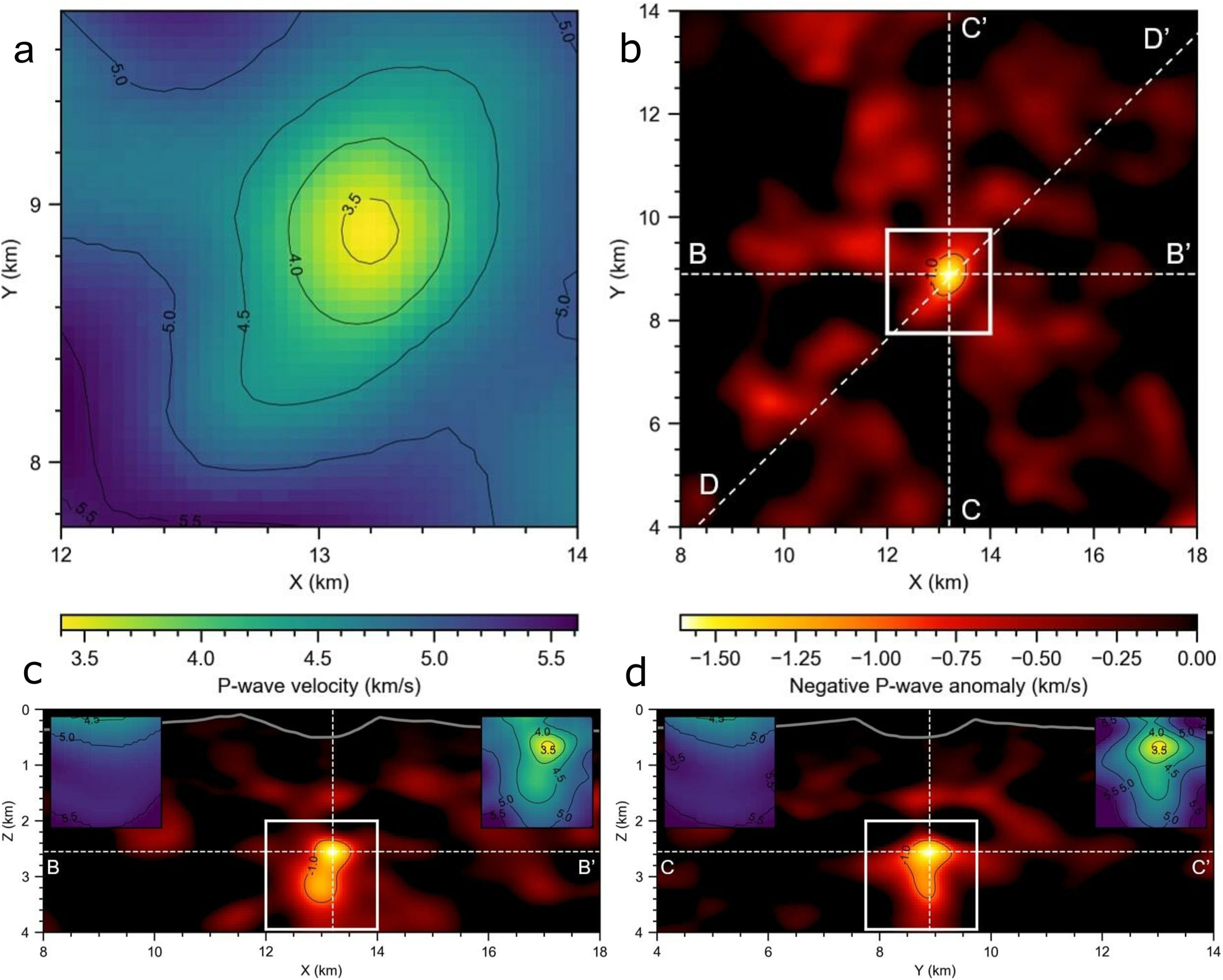
3D image of the Kolumbo anomaly
In this paper we used a high-resolution technology based on inverting full seismic waveforms to image a small, high-melt-fraction magma chamber that was not detected with standard seismic tomography. The melt reservoir extends from ∼2 to at least 4 km below sea level (b.s.l.) at Kolumbo - a submarine volcano near Santorini, Greece. The chamber coincides with the termination point of the recent earthquake swarms and may be a missing link between a deeper melt reservoir and the high-temperature hydrothermal system venting at the crater floor.
For a layman explanation of this research, see my interview for the “Volcanoes of the world” blog. The microseismicity companion that supports our conclusions can be found here. For more background, including all the technical details of data processing and inversion, please consult my PhD thesis. For a bigger picture and a discussion of the wavefront-healing phenomenon, you may want to read a comprehensive review of seismic-imaging studies of volcanoes worldwide: Paulatto M., Hooft E. E. Chrapkiewicz K., Heath B. A., Toomey, D. R. and Morgan, J. V. Advances in seismic imaging of magma and crystal mush, Frontiers in Earth Science. I have written about it already here.